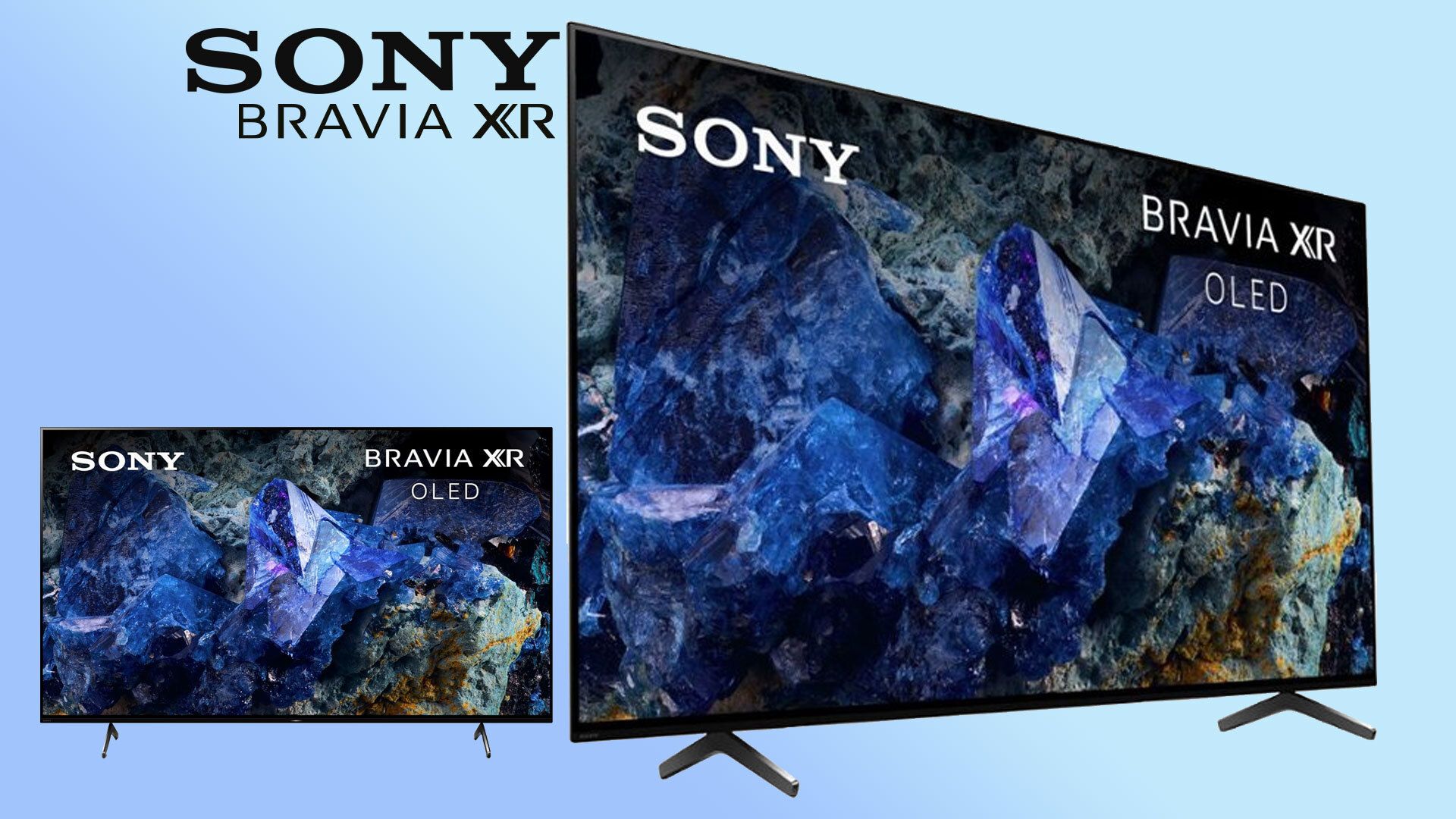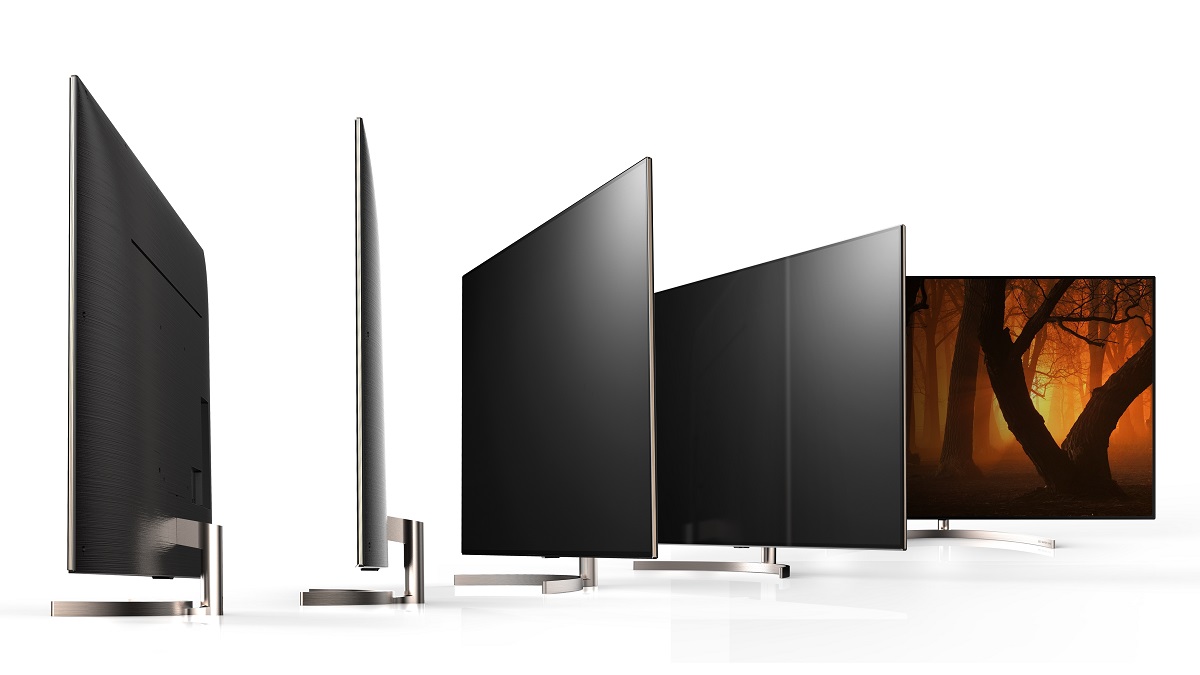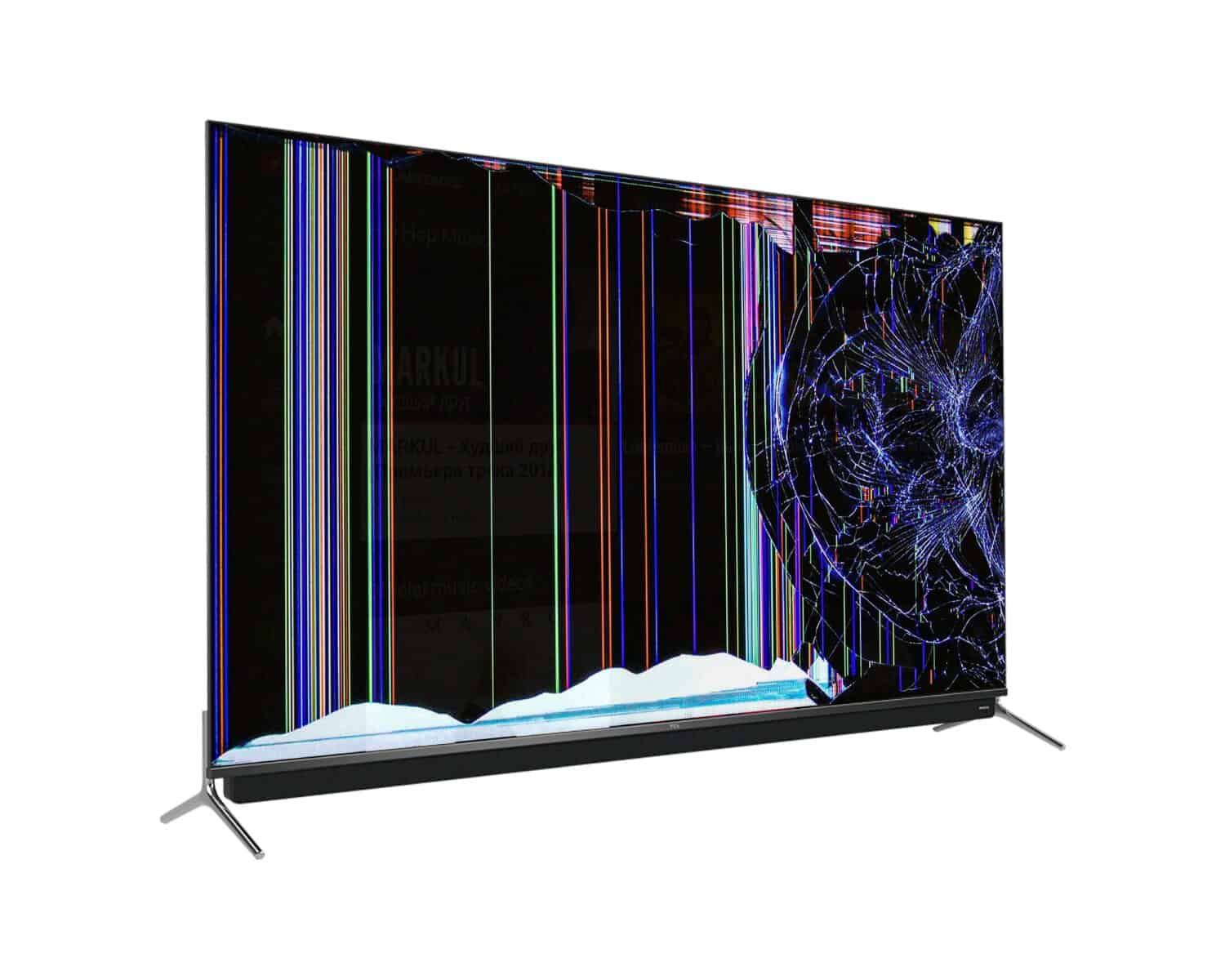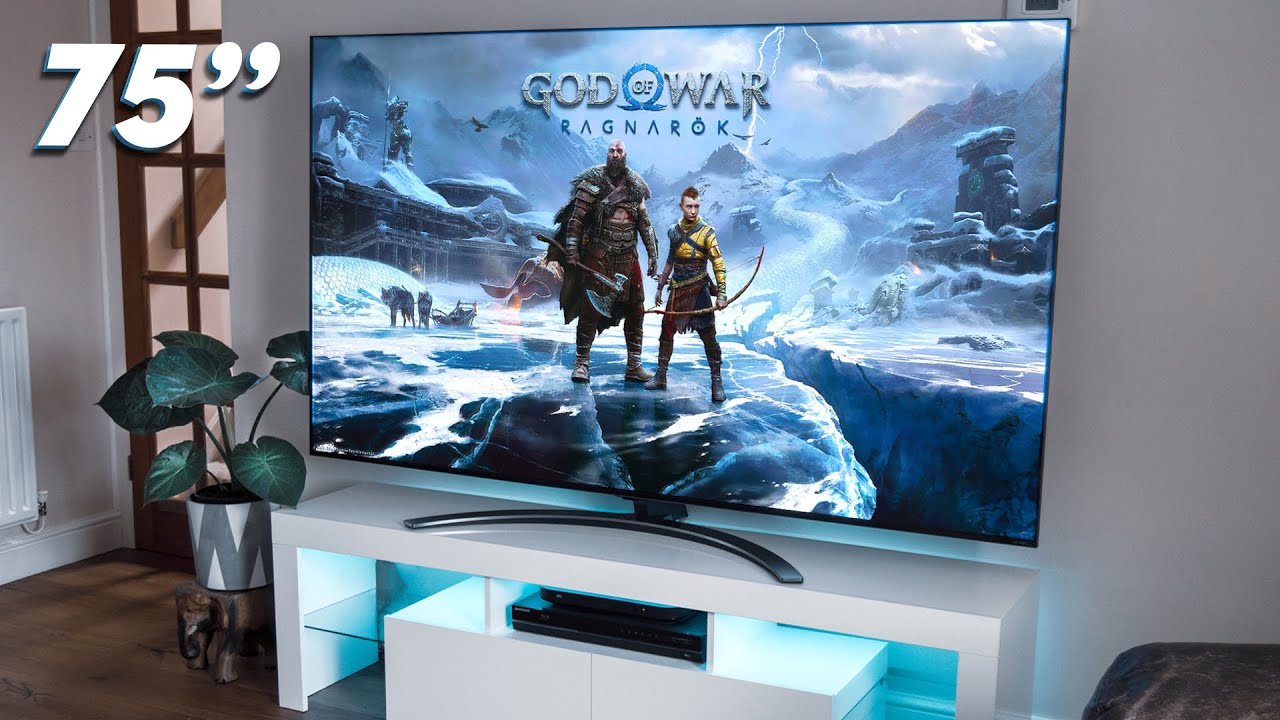Introduction
As technology continues to advance at a rapid pace, the demand for high-quality televisions with stunning visuals has grown exponentially. One of the most promising developments in display technology is OLED (Organic Light Emitting Diode), known for its exceptional picture quality, deep blacks, vibrant colors, and wide viewing angles. However, despite its remarkable performance, OLED TVs have been predominantly known for their premium price tags, making them a luxury reserved for the few.
In recent years, OLED technology has seen significant improvements, making it even more enticing for consumers. But the burning question on everyone’s mind is when will OLED TVs finally be affordable for the average consumer? In this article, we will delve into the current prices of OLED TVs, explore the factors influencing their affordability, analyze technological advancements and cost reductions, consider competition and market forces, and make predictions about the future of OLED TV pricing.
OLED technology revolutionized the television market when it first appeared on the scene. Unlike traditional LCD panels that require a backlight, each pixel in an OLED display emits its own light. This enables OLED TVs to achieve superior contrast ratios, deeper blacks, and more vibrant colors. The result is a breathtaking visual experience that surpasses what traditional LCD screens can offer.
However, the remarkable performance of OLED TVs came at a hefty price. Due to the highly complex manufacturing process and the limited production capacity of OLED panels, the initial prices of OLED TVs were prohibitively high for most consumers. This resulted in OLED TVs being a niche product targeted primarily at high-end markets and enthusiasts with deep pockets.
Over time, the prices of OLED TVs have slowly but steadily declined. Manufacturers have made efforts to optimize production processes, increase yields, and improve economies of scale. These factors have contributed to a gradual reduction in manufacturing costs, which has led to more competitive pricing for OLED TVs.
Understanding OLED Technology
OLED (Organic Light Emitting Diode) technology is a revolutionary display technology that has gained immense popularity in recent years. Unlike traditional LCD panels that rely on a backlight to illuminate the pixels, OLED displays have individual self-emitting pixels. This means that each pixel can emit its own light, resulting in precise control over each pixel’s brightness and color.
The OLED display consists of thin organic layers placed between two conductors, and when an electric current passes through these layers, they emit light. This eliminates the need for a separate backlight, allowing OLED displays to achieve incredibly deep blacks and infinite contrast ratios. Moreover, since each pixel can be turned off individually, OLED technology provides exceptional color accuracy and wide viewing angles.
One of the key advantages of OLED technology is its ability to produce perfect blacks. When a pixel is turned off, it produces no light, resulting in a true black color. This enhances the overall visual experience by providing better contrast and making colors appear more vibrant and lifelike.
In addition to its superior image quality, OLED technology also offers flexible displays. By utilizing a flexible substrate, OLED panels can be bent or curved, enabling innovative form factors such as curved TVs and rollable displays. This flexibility opens up new possibilities for design and offers a unique viewing experience.
Furthermore, OLED displays have faster response times compared to LCD panels. This means that fast-moving scenes in movies or sports are displayed with greater smoothness and clarity. This fast response time is particularly beneficial for gaming, where quick reactions and minimal motion blur are essential.
While OLED technology presents numerous advantages, it is not without its limitations. One of the main challenges is the potential for screen burn-in, where prolonged static images can leave a lasting imprint on the screen. However, manufacturers have implemented technologies and techniques to mitigate this issue and improve the longevity of OLED displays.
Understanding the capabilities and features of OLED technology is vital in appreciating the advancements and potential of OLED TVs. With their ability to deliver stunning visuals, deep blacks, vibrant colors, and flexible form factors, OLED TVs have become a highly coveted technology in the world of televisions.
Current Prices of OLED TVs
When OLED TVs first hit the market, their prices were prohibitively high, making them a luxury reserved for the wealthy and tech enthusiasts. However, as the technology advanced and manufacturing processes improved, the prices of OLED TVs have gradually become more accessible to a wider range of consumers.
Currently, the price range for OLED TVs varies depending on the brand, model, size, features, and the region in which they are sold. On average, OLED TVs start at around $1,500 for a 55-inch model and can go up to $10,000 or even higher for larger screen sizes and premium features.
It is worth mentioning that OLED TVs are still generally more expensive than their LCD counterparts. This price difference can be attributed to the higher production costs associated with OLED technology. From the intricate manufacturing process to the limited production capacity, OLED displays require sophisticated techniques and resources, which inevitably impact their pricing.
Moreover, the prices of OLED TVs can fluctuate over time due to various factors, such as supply and demand dynamics, technological advancements, competition, and external factors like currency exchange rates and trade tariffs. To find the best deals and prices, it is essential to research and compare different retailers, consider promotional offers, and keep an eye on seasonal sales events.
Despite the higher prices, OLED TVs have gained a significant following due to their exceptional picture quality and immersive viewing experience. The deep blacks, vibrant colors, and wide viewing angles make OLED TVs a preferred choice for those seeking top-notch visual performance.
It is also important to note that the prices of OLED TVs have been steadily declining over the years. With increasing competition in the market and advancements in manufacturing processes, the cost of producing OLED displays is gradually decreasing. As a result, manufacturers have been able to pass on these cost savings to consumers, making OLED TVs more affordable than ever before.
Considering the current pricing landscape, OLED TVs remain within the premium range of television options. However, they are becoming increasingly accessible to a broader audience, and with time, it is expected that the prices will continue to decrease, making OLED TVs a more mainstream choice for consumers.
Factors Affecting the Affordability of OLED TVs
There are several key factors that influence the affordability of OLED TVs, determining their price range and accessibility to consumers. Understanding these factors can provide valuable insights into the dynamics of the market and the potential for future price reductions.
1. Manufacturing Costs: The complex and intricate manufacturing process involved in producing OLED displays contributes significantly to the overall cost of OLED TVs. From the deposition of organic layers to the encapsulation and sealing processes, each step requires specialized equipment and materials, which can drive up production costs. As technology advances and production techniques become more streamlined, manufacturing costs are expected to decrease, ultimately impacting the affordability of OLED TVs.
2. Economies of Scale: The production volume of OLED panels has a direct influence on their pricing. Higher production volumes allow manufacturers to benefit from economies of scale, where the cost per unit decreases as the volume increases. As demand for OLED TVs continues to grow, manufacturers can increase production capacity, leading to more competitive pricing as economies of scale come into play.
3. Competition: The level of competition within the market has a significant impact on pricing. As more manufacturers enter the OLED TV market and existing brands expand their offerings, competition intensifies, driving prices down. Competition can stimulate innovation, improve manufacturing processes, and encourage cost-cutting measures to capture market share, resulting in more affordable OLED TVs for consumers.
4. Technological Advancements: Advances in OLED technology play a crucial role in determining the affordability of OLED TVs. Improved efficiency and yield rates in the production of OLED panels can result in cost reductions. Furthermore, as new technologies and materials are developed, there is potential for even greater advancements that could lead to lower manufacturing costs and, consequently, more affordable OLED TVs.
5. Supply and Demand: The balance between supply and demand affects the pricing of OLED TVs. When demand exceeds supply, prices tend to be higher as manufacturers take advantage of market demand. Conversely, when supply exceeds demand, prices may be lower as manufacturers try to stimulate sales. Factors such as consumer preferences, global economic conditions, and market trends can all impact the supply and demand dynamics in the OLED TV market.
It is important to note that these factors are interconnected and can influence each other. For example, technological advancements can lead to cost reductions, which in turn can increase production volumes and stimulate competition. As these factors continue to evolve and interact in the market, it is expected that the affordability of OLED TVs will continue to improve, making them more accessible to a wider range of consumers.
Technological Advancements and Cost Reductions
Technological advancements in OLED technology have played a pivotal role in driving down the costs of OLED TVs, making them more affordable for consumers. These advancements have been instrumental in improving manufacturing efficiency, reducing production costs, and enhancing the overall performance of OLED displays.
One significant technological advancement is the development of more efficient OLED materials and manufacturing techniques. OLED materials have evolved to offer higher light output efficiency, resulting in brighter screens using less power. This increased efficiency has a direct impact on cost reduction, as less energy is required to achieve the desired brightness and image quality.
Another key advancement is the improvement in OLED panel yields during the manufacturing process. By optimizing the deposition methods and enhancing the quality control procedures, manufacturers have been able to increase the number of usable panels produced per manufacturing run. This advancement reduces wastage and improves production efficiency, leading to lower costs per unit.
Additionally, advancements in substrate and encapsulation technologies have contributed to cost reductions. The development of flexible substrates allows for greater production flexibility and more efficient use of materials. This has opened up opportunities for new form factors, such as curved OLED TVs, which can enhance the viewing experience. Encapsulation techniques have also been refined, resulting in better protection for OLED panels and increased longevity, reducing the need for costly repairs or replacements.
Furthermore, innovations in OLED pixel designs have led to improved color accuracy and longer lifespans. By developing more stable and reliable OLED pixels, manufacturers have been able to extend the lifespan of OLED displays, reducing the risk of burn-in and increasing their overall durability. This durability not only provides better value for consumers but also helps to lower the long-term cost of ownership.
It is important to note that technological advancements are not limited to the materials and manufacturing processes alone. The integration of artificial intelligence and smart features has also contributed to cost reductions. These features allow for better energy management, automatic image enhancement, and adaptive brightness control, ensuring efficient and optimized performance while reducing power consumption.
As technological advancements continue to evolve and mature, the costs associated with producing OLED displays are expected to further decrease. This trend will inevitably contribute to the affordability of OLED TVs, making them more accessible to a wider range of consumers. With ongoing research and development in the OLED industry, it is likely that even more breakthroughs will occur, opening up exciting possibilities for future cost reductions and improvements in OLED technology.
Competition and Market Forces
Competition is a driving force in any industry, and the OLED TV market is no exception. The presence of strong competition among manufacturers has a direct impact on pricing and the affordability of OLED TVs. The interplay between market forces and competitive dynamics shapes the landscape and accessibility of OLED TVs for consumers.
Firstly, competition encourages manufacturers to strive for innovation and differentiation. As multiple brands vie for a larger market share, they invest in research and development to introduce new features, improve performance, and enhance user experience. This intense competition drives technological advancements and pushes manufacturers to find cost-effective ways to deliver high-quality OLED TVs.
Moreover, competition stimulates cost-cutting measures. Manufacturers aim to optimize their production processes, reduce manufacturing costs, and improve economies of scale to gain a competitive edge. This results in lower prices for consumers as manufacturers pass on the cost savings to attract more customers.
The OLED TV market is highly competitive, with several major manufacturers offering their own OLED models. This healthy competition ensures that consumers have a wide range of choices and encourages manufacturers to continuously innovate and improve their products to stay ahead of competitors. The presence of multiple players in the market also prevents any single manufacturer from monopolizing the industry, allowing for a more competitive pricing environment.
Furthermore, market forces such as supply and demand dynamics influence the pricing of OLED TVs. When demand for OLED TVs is high, manufacturers can set higher prices to maximize profits. However, as demand becomes saturated or when there is an influx of supply, manufacturers may adjust their pricing strategies to maintain market share. This constant balancing act between supply and demand ensures that prices remain competitive and responsive to market conditions.
Regional factors, such as regional competition and market preferences, can also impact the affordability of OLED TVs. Different regions may have varying degrees of competition between manufacturers and different levels of consumer demand. These regional factors, along with factors like taxes, import duties, and distribution costs, can affect the final pricing of OLED TVs in specific markets.
Overall, competition and market forces are key factors in determining the affordability of OLED TVs. The presence of competition fosters innovation, drives cost reductions, and encourages manufacturers to provide high-quality products at competitive prices. As competition intensifies and market dynamics evolve, consumers can expect more accessible pricing for OLED TVs, allowing a broader range of individuals to enjoy the stunning visuals and immersive experience that OLED technology offers.
Predictions for the Future
The future of OLED TVs looks promising, with several trends and developments pointing towards increased affordability and wider accessibility for consumers. Based on the current trajectory of the OLED TV market, here are some predictions for the future:
1. Continued Price Reductions: As technology progresses and manufacturing processes become more efficient, OLED TVs are expected to become more affordable. Cost reductions through economies of scale and improved production techniques will likely contribute to lower manufacturing costs, allowing manufacturers to offer OLED TVs at competitive price points.
2. Expanded Product Lineups: With increasing demand for OLED TVs, manufacturers are likely to expand their product lineups, offering a wider range of models at various price points. This expansion will provide consumers with greater options and increase competition within the market, further driving down prices.
3. Advancements in Display Technology: OLED technology itself is expected to evolve, bringing advancements in areas such as efficiency, brightness, and color accuracy. These improvements will enhance the overall visual performance of OLED TVs, providing consumers with an even more immersive viewing experience.
4. Growing Adoption of OLED in Various Applications: OLED displays are not limited to televisions alone. The technology is finding its way into other devices such as smartphones, tablets, and wearables. As the demand for OLED displays increases across various industries, economies of scale will further reduce manufacturing costs, benefiting the affordability of OLED TVs as well.
5. Competition Driving Innovations: The competitive nature of the OLED TV market is expected to fuel continuous innovations. Manufacturers will strive to differentiate themselves by introducing cutting-edge features, improving user experience, and adapting to changing consumer preferences. This competition-driven innovation will enhance the value proposition of OLED TVs while keeping prices competitive.
6. Emerging Players and New Market Entrants: With the growth of the OLED TV market, new players may enter the scene, further intensifying competition. New manufacturers, particularly from emerging markets, can contribute to greater price competition and increased accessibility of OLED TVs for consumers worldwide.
7. Environmental Considerations Driving Demand: As consumers become more environmentally conscious, the energy efficiency of OLED displays can be a determining factor in their purchasing decisions. OLED technology inherently offers lower power consumption compared to other display technologies, which can drive consumer demand and make OLED TVs a more appealing and sustainable choice.
These predictions indicate a positive outlook for the future of OLED TVs. As costs decrease, technology advances, and competition intensifies, consumers can expect a broader range of affordable OLED TV options with improved performance and enhanced features. The continued evolution of the OLED TV market will undoubtedly pave the way for an even more accessible and immersive viewing experience for consumers worldwide.
Conclusion
OLED technology has made significant strides in the realm of display technology, offering stunning visuals, deep blacks, vibrant colors, and wide viewing angles. However, the affordability of OLED TVs has been a point of contention for many consumers. Fortunately, the future looks promising, with several factors indicating a positive outlook for the accessibility and affordability of OLED TVs.
Technological advancements and cost reductions have been instrumental in driving down the prices of OLED TVs. Improvements in manufacturing processes, the development of more efficient materials, and enhanced economies of scale have all played a role in making OLED TVs more accessible to a wider range of consumers.
Competition within the OLED TV market has also been a driving force for affordability. Manufacturers are constantly innovating, improving their offerings, and finding ways to deliver high-quality OLED TVs at competitive prices. This intense competition stimulates cost-cutting measures and encourages further advancements in OLED technology.
Predictions for the future indicate continued price reductions, expanded product lineups, advancements in display technology, and growing adoption of OLED in various applications. These factors, coupled with the emergence of new players in the market and environmental considerations driving consumer demand, suggest a future where OLED TVs are more affordable and accessible to consumers worldwide.
While OLED TVs may still be considered a premium option compared to other display technologies, the decreasing prices and ongoing advancements in the OLED TV market offer hope for a future where these cutting-edge displays become a mainstream choice for consumers seeking an immersive viewing experience.
With the ongoing advancements and market forces at play, the day when OLED TVs become affordable for the average consumer is on the horizon. As technology continues to evolve and competition drives innovation, the future of OLED TVs looks bright, promising a more accessible and visually captivating television experience for all.

























